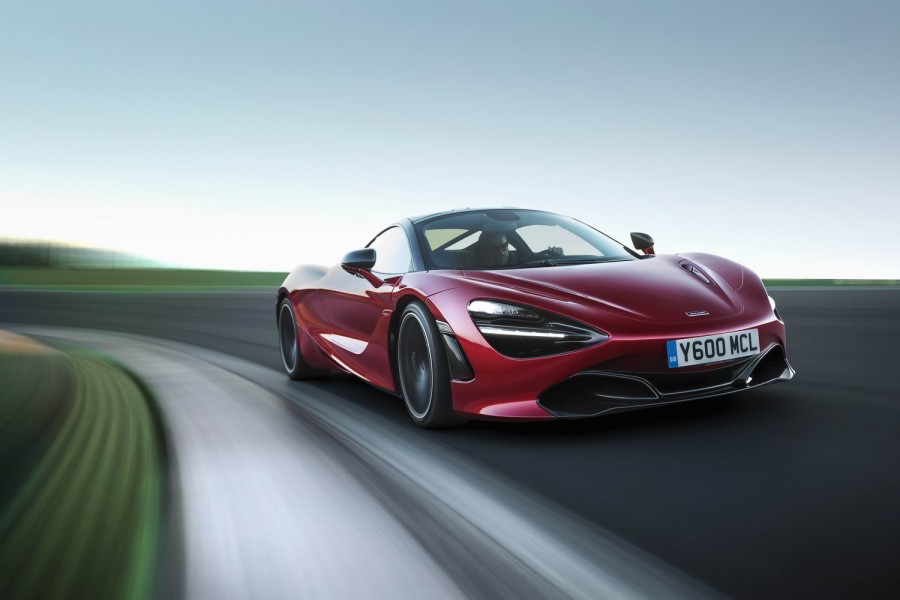Many car makers plunder their back catalogues for inspiration when creating new models, especially sporty ones. Ford itself did just that for the 2005 reinvention of the iconic GT40, called simply the GT (the '40' referred to the racer's height in inches and the newer car was over 44 inches tall). Unlike its illustrious forefather, that GT was never designed for the race track. This time around, however, there are remarkable similarities in circumstance and remit.
To commemorate 50 years since the original GT40's historic 1-2-3 finish at Le Mans, Ford started investigating how it could go about recreating that moment for the 2016 race. Initially, the Ford Performance team were tasked with using the new Mustang and they started work on that, but soon realised that (in a delicious parallel with Ford's battle with Ferrari in the sixties), to beat the Ferrari 458 Italia in the 2016 race, the Mustang would have to be modified almost beyond recognition, rely on special dispensations from the FIA and also on 'Balance of Performance' assistance. It was decided that all that was too risky. Instead, a small team were asked to look at the feasibility of an all-new car and hence the new Ford GT was born. By this stage, a lot of time had been lost and with Le Mans fast approaching, there was no time to develop the road-going GT first and then modify it for the track so the two were created at the same time. In fact, Ford focused hard on the racer initially and then had to pull out all the stops to deliver at least one customer road car within the same calendar year of its Le Mans entry to satisfy the homologation rules. In fact, it delivered two. Production will be limited to 250 units for four years.
In the metal
The Ford GT is a truly jaw-dropping machine. Its well-publicised party track is moving to Track mode, which immediately, dramatically drops the ride height by a massive 50mm. The rear wing rises at the same time and other detail changes happen under the skin to adjust the aerodynamics and suspension to suit. The front of the GT is relatively conventional looking, yet unbelievably low.
Ford was obsessive about reducing the frontal area of the GT in a bid to reduce aerodynamic drag, and went to great lengths to achieve that. The glasshouse, for example, is really narrow, made possible by positioning the driver and passenger close to each other and then fixing their seat bases so the roof and windscreen don't need to accommodate seat movement. The whole body is made of bonded carbon fibre parts and theatrical scissor-style doors take plenty of it with them to make it a little easier to get in.
Before we do that though, it's worth spending some time poring over the rear bodywork, as it's truly a work of art. The wheels are visually covered by pods that are separated from the cabin area by huge channels, again for aerodynamic reasons, feeding air to the adjustable rear wing. That sits above an aggressive rear end featuring two large centrally mounted exhaust outlets, circular LED lights and a massive diffuser low down. The engine can be seen through the rear window as well, which has plenty of vents, and it's fed air from channels in the side buttresses.
The big doors open easily (they're light thanks to the carbon construction) and while the GT is very low down, averagely sized people won't find it too difficult to get into. Unless they're wearing a helmet, which certainly makes it awkward. Once in, you're close to your passenger and the cabin is bare, but everything you need is there and to hand. The seat backs tilt a little and, as the bases are fixed, the steering wheel instead has a lot of adjustment, while the pedal box is spring loaded to allow easy adjustment too. It doesn't take long to get comfortable, and visibility isn't bad at all.
Ahead of you is a bespoke oblong steering wheel that is pure motorsport. It features a huge number of buttons and switches on it, including those for the indicators and wipers, which is less than ideal, but the long steering wheel reach adjustment apparently obviated the use of traditional column stalks. Ahead is a beautifully designed 10-inch digital display panel that changes appearance depending on driving mode, while a conventional touchscreen infotainment screen is mounted in the centre along with unique heating and ventilation controls. That system warrants a mention, as Ford revealed it couldn't fit in a traditional ventilation system and ducting with its small glasshouse so instead integrated it, and the instrument panel, into the existing structure, saving space and weight. Very neat. Not so neat, but I guess of less interest to many buyers of supercars as toys, is the fact there's no glovebox and a quoted 11 (yes, eleven) litres of luggage space.
Driving it
Full disclosure: we did not have the chance to spend a lot of time in the Ford GT. Following a few sighting laps in a Focus RS to learn our way around a handling circuit at Michelin's Ladoux facility in France, we were thrust into the driver's seat of the GT for a scant three laps and there wasn't the opportunity to try the various driving modes and settings. No time to waste, I twirled a dial on the left-hand spoke of the wheel to T for track mode, the car dropped down, then time to turn the (Jaguar-like) rotary gear selector to D for drive. For good measure I pressed the button for full manual control of the seven-speed dual-clutch automatic transmission and we eased off toward the circuit in as smooth a manner as any normal car.
A tug on the delicately designed and very responsive gearchange paddle into second, quick check that the track is clear and hoooooly moooooly this thing shifts. I've not even troubled the topmost of the red LED change-up lights and the GT is scarpering down the track like, well, a Le Mans racer on an in lap. Behind the cabin is a twin-turbocharged 3.5-litre EcoBoost V6 petrol engine making 656hp and a chunky 746Nm of torque. It sounds meaty and purposeful ambling around on part-throttle and roars like a racer at high revs, but while its performance is seriously impressive, the chassis is what grabs your attention most.
It sounds odd to say, I know, but this is a really 'friendly' supercar to drive very fast on a dry track. Its limits of adhesion are very high, helped no end by the downforce generated, I assume, while the steering is light and alive in your hands (it's an hydraulically assisted system). The brake pedal is solid feeling for confidence-inspiring stops from high speed, yet it's a cinch to modulate. And actually, so is all that power. Key to that seems to be a long-travel throttle pedal, removing any twitchiness from the power delivery and allowing you modulate it as you see fit. In our few laps we didn't approach the car's outer limits often, but it's clear that an owner won't get bored quickly, as they learn just how quick this car can be. There's no slack in it, yet you can feel what's going on too. Very promising.
What you get for your money
I'm not giving the Ford GT a rating here for the moment. Clearly, value is a relative thing anyway, especially in the exalted supercar atmosphere, but on top of that it's not entirely clear how much the car would cost here. Mumblings are of '€500,000 before taxes', which would mean nearly €800,000 if that means excluding VRT, or closer to a million Euros if that price does not include VAT or VRT. There are alternatives with similar performance for a lot less, but I guess logic does not come into such a purchase. Indeed, a 'few' Irish buyers will be taking delivery of their own GTs...
Summary
Time constraints in the development program of the Ford GT meant that, in the company's focus on Le Mans success, some compromises were made along the way, but I'd argue that it has resulted in a more special road car because of that, one with genuinely innovative engineering at its core. Despite its maker's single-minded focus on winning, the GT road car is also relatively easy to drive ridiculously quickly on a circuit. There are lighter and faster supercars in the world, but few as interesting right now.








































